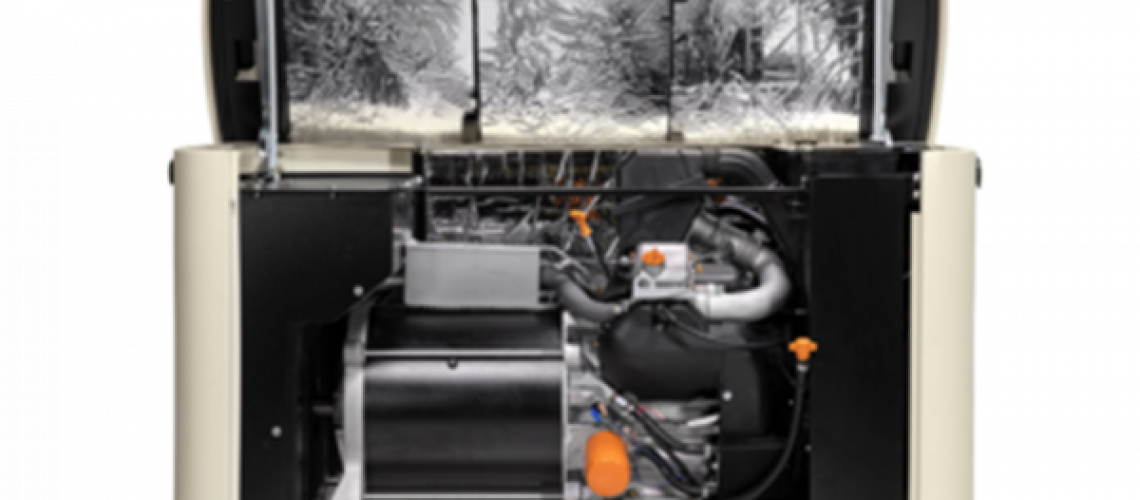Like many mechanical devices, generators require a “breaking in” period – sometimes called mechanical run-in.
Breaking in typically occurs within a few hours of use. In an engine, it involves adjusting the contact between the piston rings and the engine’s cylinder wall. After manufacturing, the cylinder wall is not perfectly smooth – there is still some residual roughness to facilitate oil adhesion. During first-time startup, the piston rings (between the piston and the cylinder) begin to seal against the small ridges in the cylinder wall. Breaking in involves smoothing these out in a process of “self-machining,” allowing the engine to run optimally.
Fortunately, most generator engine manufacturers perform mechanical run-ins as part of their production process. Therefore, consumers do not usually have to concern themselves with optimal piston functioning.
However, there are certain actions that you will need to perform to ensure that your generator performs optimally from the get-go. In this post, we offer some tips to help you.
(Please note that the following advice is necessarily generic. You will need to consult your generator’s specific instruction manual first. If you are struggling, you can get advice from Generator Supercenter of Denton about generator setup and maintenance at any time).
Tip 1: Ensure That You Use The Correct Oil Type And Fill The Reservoir
Just like regular car engines, generator engines require oil to function optimally. Engine oil facilitates lubrication for the moving parts of an engine. Without this, components would grind against each other, leading to less efficient burning of fuel, more abrasion, and more unwanted combustion byproducts.
Most generators have an oil cap with a reservoir below. You will need to remove the cap and pour oil into the reservoir until you reach the maximum permitted level. Manufacturers will usually specify in their manuals how much you need to add.
If you have some mechanical skills, you can also apply some oil to the cylinders directly. Start by removing the spark plug and then apply conditioning fluid to the cylinders underneath, being careful to apply just a small amount. This process ensures that the pistons never move through the cylinders without lubrication.
Tip 2: Find Out How Often You Need To Change The Oil
Manufacturer specifications for oil changes can vary wildly from product to product. For that reason, you will need to consult the supplied manual. Some vendors will require you to fill up with fresh oil more often when your generator is new compared to when it is old. For instance, the first oil change may need to come sooner if the system is starting out dry.
Tip 3: Clean Out Any Dirt
Shipping can sometimes cause your generator to become dirty. Small particles enter the engine compartment or fuel lines, leading to contamination. Therefore, manufacturers will often recommend swapping out old oil for new regularly, allowing you to flush the system first before slipping into long-term operational protocols.
Tip 4: Always Use The Recommended Fuel
While adding whatever fuel you have available to your generator is convenient, we do not recommend it. The fuel your generator requires is often different from that required by regular automobiles.
Manufacturers will usually specify the type of gasoline, diesel or propane that you need. Frequently, they will caution against using fuels with additives or other hydrocarbons as these may actually harm your generator’s carefully calibrated components.
Tip 5: Let It Run For An Hour With No Load
Even though most manufacturers pre-wear cylinders as part of the manufacturing process, it is still a good idea to let your new generator run for an hour with no load after installation. Running allows oil to circulate throughout the engine, clearing out any debris. You can then drain the oil and replace it with new fluid for full-time operation.
Tip 6: Always Maintain Your Generator
Lastly, after you’ve broken in your generator, you must then maintain it, as you would any other engine. Generator Supercenter of Denton has a GenMonitor service that lets you automate maintenance. We remotely monitor your product, schedule regular checkups, and can even provide remote diagnostics when you choose one of Generac’s products. Remember, if you have any questions about generator setup or maintenance, we are here to help.
In summary, breaking in your generator correctly is essential. Not only will it prevent unnecessary damage to the generator itself, but it will also protect the rest of your home too. Call 940-320-5600 today or visit our showroom at 3801 North Interstate 35, Suite 146, Denton, TX 76207 to find a solution for your generator maintenance needs.







